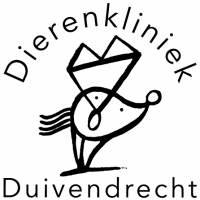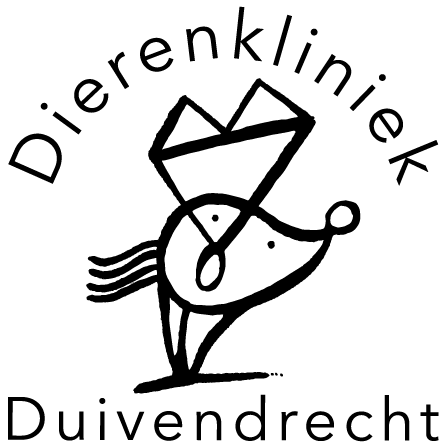Laparoscopic sterilization
The best time to perform laparoscopic sterilization is 3 months after the end of the heat cycle.
When a female dog is spayed, we remove the ovaries. Technically, we are talking about a castration. In principle, the uterus remains in place unless it appears that it looks abnormal (in which case we will always call for consultation).
Laparoscopic sterilization involves surgery by keyhole surgery. Three small holes are made in the abdominal cavity and trocards (tubes that allow us to enter the abdomen) are inserted into these. This allows the camera and instruments to be introduced into the abdominal cavity.
The main advantage of laparoscopic sterilization is that the ovaries do not have to be pulled very hard to move them out of the abdominal cavity. This ensures that the animals experience less (after) pain and are often happy and fit the day after the procedure.
It is also a great advantage that we go into the abdomen with a camera and thus have a good overview of the organs and can inspect everything properly.
The blood vessels to the ovaries are sealed, that is, they are ‘fused together’. This greatly reduces the risk of bleeding. The risk of infection post-operatively is also smaller because only 3 small wounds are made to the abdomen.
We use a ventilator so that we can regulate breathing and CO2 absorption in the body as well as possible. The abdomen is inflated with CO2, if animals absorb too much CO2 they can get muscle pain. That is why we want to regulate this intake as well as possible by means of artificial respiration. Besides, of course, the fact that we can regulate the anesthesia even better this way.
We would like to see your dog again after 7-10 days for the free wound check. If the wound looks good at the checkup, your dog can do everything again. Before then it is important that you keep your dog as calm as possible because jumping or playing wildly can pop the stitches. Your dog is not allowed to bite or lick the wounds, so your dog always wears a onesie as a precaution. You are requested to walk your dog on a leash until the wound check and not to let it swim. We offer extensive pre- and aftercare and will therefore go through this information with you several times to ensure that everything is clear.

